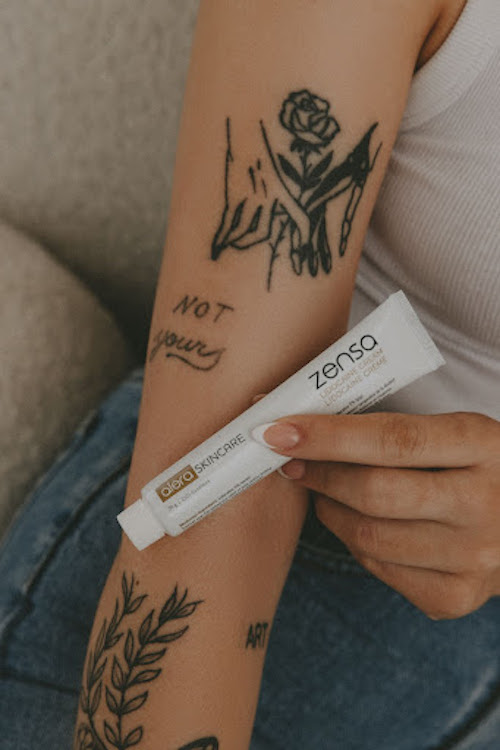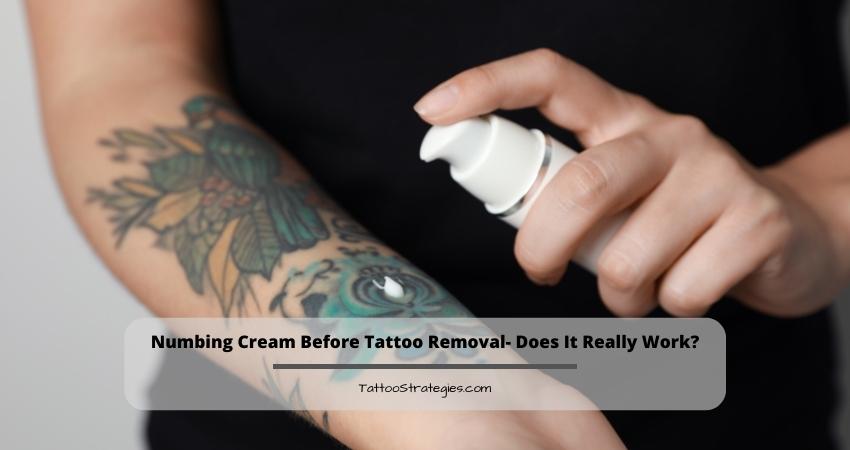
Okay, let’s dive into whether numbing cream is safe for your sunflower tattoo!
Thinking about getting a sunflower tattoo?
Awesome choice!
But are you also dreading the pain?
I get it.
Tattoos can sting.
So, you’re probably wondering if numbing cream is a good idea.
Is it safe?
Will it mess with the tattoo?
Let’s break it all down, like we’re chatting over coffee.
Is Numbing Cream Really Safe for Sunflower Tattoos?
First things first, let’s address the elephant in the room: safety.
Generally, yes, numbing cream can be safe for a sunflower tattoo.
But—and this is a big but—it depends.
It depends on the type of cream, your skin, and how you use it.
I’ve seen some crazy reactions to dodgy creams, so let’s get this right.
What Kind of Numbing Cream Are We Talking About?
Not all numbing creams are created equal.
There are a few different types, but the most common ones contain lidocaine, prilocaine, or benzocaine.
These are local anesthetics that temporarily block pain signals.
- Lidocaine: This is the most common and generally considered safe when used as directed.
- Prilocaine: Similar to lidocaine, but sometimes combined with it for a stronger effect.
- Benzocaine: Often found in over-the-counter products.
Less potent than lidocaine.
Important! Always check the ingredients and talk to your tattoo artist before using anything.
Potential Risks with Numbing Cream and Your Sunflower Tattoo
Okay, so it can be safe, but what are the downsides?
- Allergic Reactions: This is the biggest concern.
Some people are allergic to lidocaine or other ingredients in the cream.
Always do a patch test on a small area of skin 24 hours beforehand. - Skin Irritation: Even if you’re not allergic, the cream can still irritate your skin.
Redness, itching, or swelling are all possible. - Interference with the Tattoo Process: This is where it gets tricky.
Some creams can change your skin’s texture, making it harder for the artist to apply the ink properly.
This could affect the final look of your sunflower tattoo. - Systemic Absorption: If you apply too much cream over a large area, your body can absorb it into your bloodstream.
This can lead to serious side effects like dizziness, confusion, or even seizures (rare, but possible).
How to Use Numbing Cream Safely for a Tattoo
Alright, so you’re still considering numbing cream.
Here’s how to minimize the risks:
- Talk to Your Tattoo Artist: This is rule number one.
They know best about what’s safe for their process and your skin.
They might even have recommendations. - Choose the Right Cream: Opt for a reputable brand with clear instructions.
Avoid anything that seems dodgy or cheap. - Do a Patch Test: Apply a small amount of cream to a discreet area of skin (like your inner arm) and wait 24 hours.
If you see any redness, itching, or swelling, don’t use it. - Follow Instructions Carefully: Don’t apply more cream than recommended, and don’t leave it on for longer than instructed.
- Apply Sparingly: A thin layer is all you need.
Don’t slather it on like sunscreen. - Consider Timing: Apply the cream about an hour before your appointment, or as directed by your artist.
- Communicate with Your Artist: Let them know you’ve used numbing cream and if you experience any unusual sensations during the tattoo process.
My Personal Experience with Numbing Cream
I’ve used numbing cream a few times for larger tattoos, especially in sensitive areas.
Honestly, it made a huge difference.
But I always followed the rules above and talked to my artist beforehand.
One time, I skipped the patch test (dumb, I know) and ended up with a rash that lasted for days.
Lesson learned!
Why You Might Not Need Numbing Cream
Okay, let’s be real.
Tattoos hurt, but it’s a manageable pain for most people.
Consider these factors before reaching for the cream:
- Placement: Some areas are more sensitive than others.
Ribs, feet, and inner arms tend to hurt more.
Your shoulder or thigh for that sunflower tattoo might not be so bad. - Size and Complexity: A small, simple tattoo will be less painful than a large, detailed one.
- Pain Tolerance: Everyone’s different.
Some people barely flinch, while others are more sensitive. - Experience: If you’ve had tattoos before, you know what to expect.
The anticipation is often worse than the actual pain.
Alternatives to Numbing Cream
If you’re nervous about numbing cream, there are other ways to manage the pain:
- Breathing Exercises: Deep, slow breaths can help you relax and focus.
- Distraction: Listen to music, watch a movie, or chat with your artist.
- Take Breaks: If you’re getting a large tattoo, ask for breaks to stretch and move around.
- Stay Hydrated and Well-Rested: Being tired and dehydrated can make the pain feel worse.
- Positive Mindset: Believe you can handle it!
Sunflower Tattoo Aftercare: Numbing Cream Impact?
Even if you use numbing cream, proper aftercare is crucial.
Follow your artist’s instructions for cleaning and moisturizing your new tattoo.
Be extra vigilant for any signs of infection or irritation, especially if you used numbing cream.
If you notice anything unusual, contact your artist or a doctor.
FAQ About Numbing Cream and Tattoos
- Can I use Emla cream for a tattoo? Emla cream is a popular brand of numbing cream containing lidocaine and prilocaine.
It can be effective, but always follow the guidelines above and talk to your artist. - Will numbing cream affect the color of my tattoo? It shouldn’t affect the color directly, but if the cream alters your skin’s texture, it could indirectly impact the ink absorption.
- How long does numbing cream last for a tattoo? The effects typically last for 1-3 hours, depending on the cream and your skin.
- Can I buy numbing cream over the counter? Some weaker creams are available over the counter, but stronger ones often require a prescription.
- Is it embarrassing to use numbing cream? Absolutely not!
It’s your body, your choice.
Don’t let anyone make you feel bad about wanting to manage the pain.
So, there you have it.
A deep dive into numbing cream and its potential impact on your sunflower tattoo.
Remember, always prioritize safety and communication with your tattoo artist.
Ultimately, whether or not you use numbing cream is a personal decision, but being informed is key to ensuring a safe and beautiful tattoo experience.
Choosing to use numbing cream for your sunflower tattoo is a decision that hinges on safety, proper usage, and open communication with your tattoo artist.










